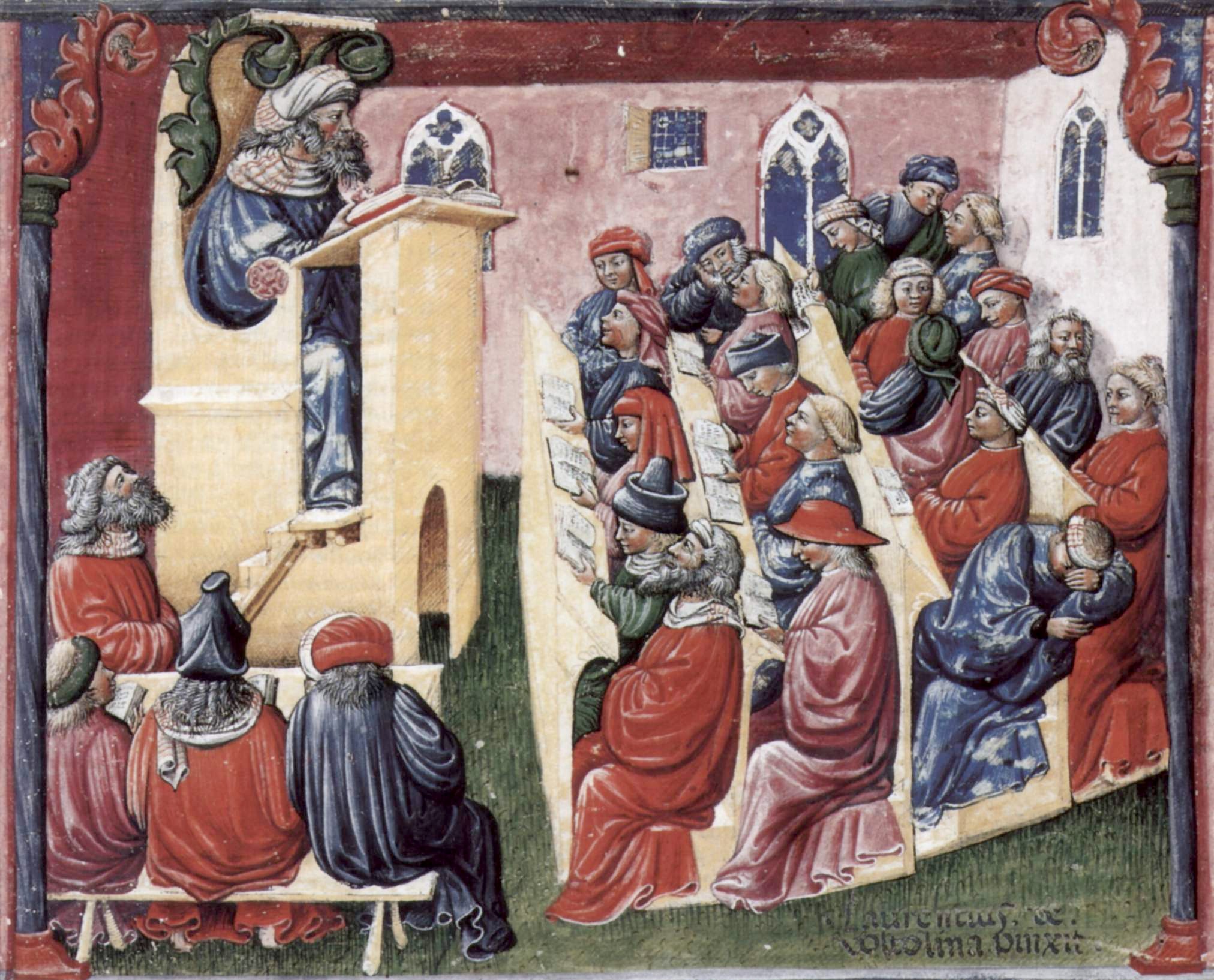A lecture boring students 600 years ago source
A few days ago the flipped classroom concept made the front page of the major Danish newspaper Politiken. The occasion was the appointment of a new president of Roskilde University, Hanne Leth Andersen, a professor of education. Among other things, the interview motivated the use of the flipped classroom approach by arguing that incoming students have changed in recent years and that they loose patience with hour-long lectures.
Having given interviews myself, I know it's hard to separate what Leth Andersen actually said and how it is presented in the article, so I think the article is being unfair to students in that respect. Lectures never really worked well and we have known that for a long time.
Perhaps the most celebrated lectures in the natural sciences are the Feynman Lectures on Physics, which he gave to Caltech students more than 50 years ago. Here is what Feynman wrote in the preface to the lecture notes in 1963 (emphasis mine):
The question, of course, is how well this experiment has succeeded. My own point of view—which, however, does not seem to be shared by most of the people who worked with the students—is pessimistic. I don't think I did very well by the students. When I look at the way the majority of the students handled the problems on the examinations, I think that the system is a failure.
I think, however, that there isn't any solution to this problem of education other than to realize that the best teaching can be done only when there is a direct individual relationship between a student and a good teacher—a situation in which the student discusses the ideas, thinks about the things, and talks about the things. It's impossible to learn very much by simply sitting in a lecture, or even by simply doing problems that are assigned.
One of the most common components of the flipped classroom approach is peer instruction, pioneered by Eric Mazur at Harvard University, in which lecture is replaced by in-class discussion and voting using clickers. Mazur switched to this approach in the early 1990's because he found that lecturing lead to rote-memorization and little conceptual understanding among his elite Harvard pre-med students. He was lead to this realization by a series of papers published in 1985 by David Hestenes that demonstrated this general trend based on test results from ca 1000 students taught by 7 different instructors at two different universities in the early 1980's.
Carl Wieman related this story from another pioneer in science education, Joe Redish, who came to the same realization in the late 1970's:
Even though the students thought his lectures were wonderful, Joe wondered how much they were actually learning. So he hired a graduate student to grab students at random as they filed out of class at the end of the lecture and ask, “What was the lecture you just heard about?” It turned out that the students could respond with only with the vaguest of generalities.
I'm not saying students haven't changed. And the way we teach students need to change. But in the case of "the lecture" as the primary teaching tool, these two things are largely unrelated.


No comments:
Post a Comment